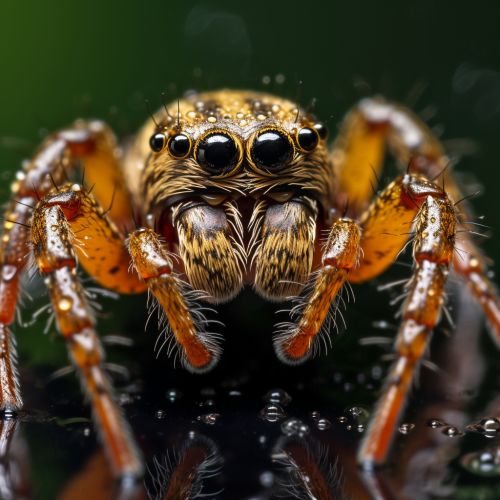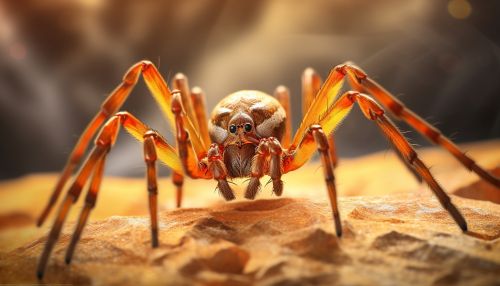Arachnids
Introduction
Arachnids are a class of joint-legged invertebrate animals, in the subphylum Chelicerata. They are primarily terrestrial, living in a wide range of habitats around the globe. Arachnids include species such as spiders, scorpions, ticks, and mites. They are characterized by their eight legs and lack of antennae.


Anatomy and Morphology
Arachnids are distinguished by their specialized body structures. They have two main body segments: the prosoma (or cephalothorax) and the opisthosoma (or abdomen). The prosoma bears the legs, eyes, and mouthparts, while the opisthosoma contains the reproductive organs, digestive tract, and respiratory organs.
Prosoma
The prosoma is covered by a hard protective covering called the carapace. The prosoma bears four pairs of legs, a pair of chelicerae, and a pair of pedipalps. The chelicerae are often modified into fangs or pincers, depending on the species. The pedipalps are used for sensing the environment, manipulating food, and in males, are often modified for sperm transfer during mating.
Opisthosoma
The opisthosoma is typically segmented and, in many species, bears appendages. In spiders, the opisthosoma bears spinnerets, which are used in the production of silk. In scorpions, the opisthosoma is divided into a mesosoma and a metasoma, with the metasoma forming the scorpion's characteristic tail and stinger.
Physiology
Arachnids have an open circulatory system, with a heart that pumps hemolymph to the body tissues. They breathe through specialized structures called book lungs, or through tracheae, or both. Many arachnids, such as spiders and scorpions, have a simple digestive system with a tube running from the mouth to the anus.
Reproduction and Life Cycle
Most arachnids reproduce sexually, with internal fertilization. Many species have complex courtship rituals to avoid cannibalism. The female typically lays eggs, which she may protect or carry with her. The eggs hatch into immature forms known as nymphs, which resemble smaller versions of the adult. The nymphs undergo a series of molts before reaching adult size.
Behavior and Ecology
Arachnids are mostly carnivorous, feeding on smaller invertebrates. They are typically solitary animals, with some exceptions such as social spiders. Many arachnids are nocturnal, although there are also many diurnal species. They are found in nearly all terrestrial habitats, from the highest mountains to the driest deserts.
Classification and Diversity
There are over 100,000 described species of arachnids, divided into 11 orders. These include the spiders, scorpions, mites, ticks, harvestmen, and several smaller groups. Arachnids are a diverse group, with species adapted to a wide range of habitats and lifestyles.
Human Interaction
Humans interact with arachnids in a variety of ways. Some species are considered pests, such as ticks and mites, which can transmit diseases. Others, such as spiders and scorpions, are often feared due to their venom, although only a small number of species are dangerous to humans. On the other hand, many arachnids are beneficial, controlling pest populations through their predation.
